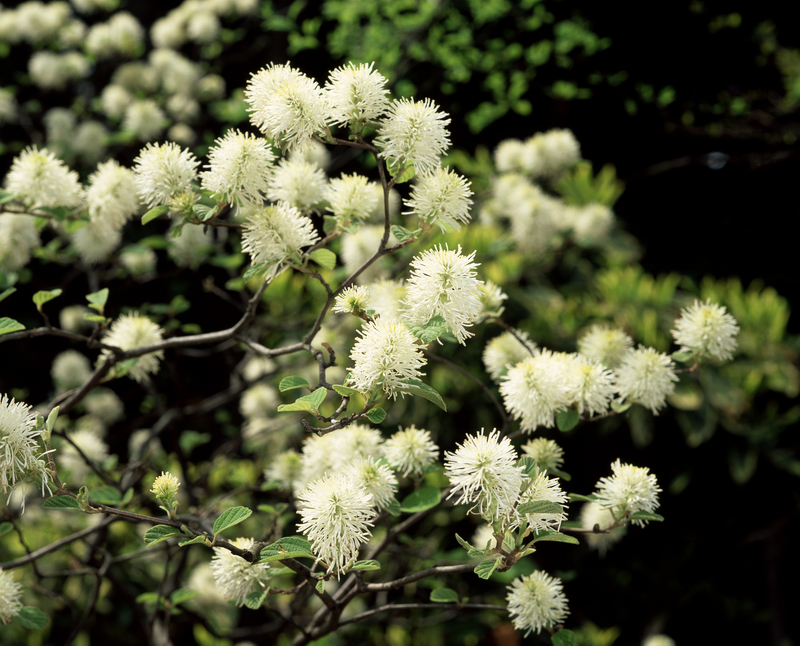Understanding Soil Health for Drought-Resistant Summer Lawns
As summer temperatures soar and rainfall becomes increasingly unpredictable, the quest for a lush, green lawn turning yellow can be disheartening for many homeowners. But did you know that the secret to a vibrant, drought-resistant lawn begins with the health of your soil? In this comprehensive guide, we delve deep into the science and practical strategies behind soil health, empowering you to build a resilient, eco-friendly lawn that thrives even in the driest months.
What is Soil Health, and Why Does it Matter?
Soil health refers to the soil's ability to function as a living ecosystem that sustains plants, animals, and people. Healthy soil goes beyond just supporting grass roots; it efficiently cycles nutrients, regulates water, and wards off pests and diseases--key factors for drought-resistant summer lawns.
- Nutrient Cycling: Healthy soil breaks down organic matter, releasing nutrients essential for turf growth.
- Water Retention: Improved structure allows soil to store moisture for longer periods, supporting lawns during dry spells.
- Microbial Activity: Active microbial life helps battle disease and promotes grass vigor.
Ignoring soil health risks more than cosmetic issues--poor lawn resilience to summer heat, excessive water use, and frequent fertilizer applications can follow. By making soil health a foundation, your lawn becomes increasingly drought-tolerant, reducing water and maintenance needs.

The Building Blocks of Healthy Lawn Soil
Creating a drought-resistant summer lawn begins with understanding soil's crucial components:
- Minerals: Sand, silt, and clay particles that determine texture and drainage.
- Organic Matter: Decomposed plant and animal material that enhances water and nutrient holding capacity.
- Air and Water: Essential for root health and microbial activity.
- Living Organisms: Beneficial bacteria, fungi, earthworms, and other organisms that support nutrient cycling.
The right balance between these elements is critical for soil health. Too much clay impedes drainage, sand drains too quickly, and poor organic matter leads to weak water and nutrient retention--each undermines lawn drought tolerance.
Soil Texture Types and Their Significance
- Sandy Soils: Quick draining, low in nutrients, but easy for roots to penetrate. Improve drought resistance by adding organic matter.
- Clay Soils: Hold nutrients and water well, but may suffocate roots if compacted. Aerate and amend with compost for balance.
- Loamy Soils: The ideal mix, offering good drainage and fertility for most lawn grasses. Maintain with annual topdressing and minimal disturbance.
How Soil Health Influences Drought-Resistant Lawns
The core of a drought-proof lawn lies below the surface. Here's how healthy soil helps grass beat the summer heat:
- Encourages Deep Roots: Soft, nutrient-rich soil enables grass roots to explore deeper layers for water, staying green longer in dry conditions.
- Boosts Water Holding Capacity: Soil rich in organic matter acts like a sponge, reducing the need for frequent irrigation.
- Promotes Strong, Resilient Turf: A biologically active soil community helps lawns recover from drought stress faster, with less disease and pest trouble.
For summer lawns that withstand drought, the focus must shift from cosmetic quick fixes to comprehensive soil care. Let's explore the steps that make a real difference.
Assessing Your Lawn's Soil Health
1. Soil Testing: The First Step
Soil tests are invaluable for understanding your yard's starting point. You can purchase DIY kits or hire local extension agencies. Tests reveal:
- Soil pH (acidic, neutral, or alkaline)
- Nutrient deficits (nitrogen, phosphorus, potassium, and micronutrients)
- Organic matter content
- Texture and compaction levels
Knowing these factors helps you tailor soil amendments and care--critical for improving soil for drought tolerance.
2. Checking Soil Structure and Compaction
- Insert a shovel or garden fork--difficulty penetrating more than 2-3 inches suggests compaction.
- Healthy soil crumbles easily, revealing a mix of roots, organic matter, and visible creatures like earthworms.
Compacted soils limit water infiltration and root growth, undermining drought resistance. Aeration and organic matter can correct this problem.
Improving Soil Health for Drought-Resistance
1. Increase Organic Matter
*Compost* is the single best amendment for improving soil water retention and fertility. Topdress your lawn annually:
- Spread 1/4 to 1/2 inch of well-rotted compost in early spring or fall, raking to distribute.
- Let grass clippings decompose into the lawn--nature's free fertilizer!
- Leave mulched leaves in autumn to break down and enrich soil.
2. Aeration: Relieving Soil Compaction
Soil aeration involves punching small holes in densely packed soil, allowing water, nutrients, and air to penetrate deeper.
- For heavy clay soils, aerate at least once a year.
- Use a hollow-tine aerator for best results.
- Follow aeration with compost application to maximize benefits for your summer lawn's drought resistance.
3. Adjusting Soil pH for Turf Resilience
Grass grows best at a near-neutral pH (6.0-7.0). Incorrect pH locks up nutrients, making fertilization less effective.
- Apply lime to acidic soils as recommended by your soil test.
- In alkaline soils, choose fertilizers formulated for high-pH conditions or apply elemental sulfur if needed.
Water-Wise Lawn Care Starts with Soil
Responsible watering practices, matched to healthy soil, can save thousands of gallons each year while maintaining a beautiful summer landscape.
- Water deeply and infrequently-- this encourages roots to grow deep, tapping into the naturally stored moisture healthy soil provides.
- Early morning irrigation (before 10 AM) reduces evaporation losses.
- Mulch around the edges of lawns and under trees to further moderate soil moisture and temperature.
Smart Irrigation for Drought-Resistant Lawns
- Install soil moisture sensors or smart irrigation controllers that adjust watering to real-time conditions.
- Fix leaks, broken sprinklers, and direct heads to avoid runoff onto sidewalks or driveways.
- Reduce irrigation to match the actual needs of your improved soil, not last year's schedule.
Choosing Drought-Resistant Grass Types
Even with premium soil health, your lawn's summer drought resistance is boosted further by selecting the right grass cultivars:
- Bermudagrass: Thrives in heat, low water needs.
- Zoysiagrass: Dense carpet, tolerates drought and foot traffic.
- Buffalograss: Native American prairie grass, exceptional drought acceptance.
- Tall Fescue (Turf-type): Deep roots, better for transition zones.
Consult local landscapers or extension offices to choose the best lawn grass for drought tolerance in your region.
Long-Term Strategies for Sustainable Lawn Soil Health
- Apply slow-release, organic fertilizers to minimize leaching and feed beneficial microbes instead of quick-synthetic fixes.
- Practice grasscycling-- regularly return clippings to the lawn to maintain soil organic matter.
- Manage thatch: A thin thatch layer insulates roots; too much hinders water flow and traps moisture.
- Rotate or overseed with multiple drought-resistant species.
For extreme drought periods, let your lawn 'go dormant' rather than over-water. Healthy soil allows turf to recover more rapidly with the return of rain or normal irrigation.
Common Soil Health Pitfalls and How to Avoid Them
- Overcompaction: Avoid excessive foot or mower traffic during wet soils.
- Excess Fertilizer: Over-applying synthetic chemicals disrupts microbial populations and leads to shallow-rooted, less drought-tolerant turf.
- Neglecting Soil Testing: Guesswork wastes resources; test every 2-3 years for lasting soil balance.
- Ignoring Weeds and Pests: Weedy or infested lawns indicate unhealthy soil--focus on soil improvement for lasting weed suppression.

The Environmental Impact of Healthy, Drought-Resistant Lawns
By prioritizing soil health for drought-resistance, you can enjoy these broader benefits:
- Reduce water consumption: Cutting landscape water usage saves resources and money.
- Decrease pollution: Fewer fertilizer and pesticide applications mean less runoff into local waterways.
- Mitigate heat: Lush, healthy lawns reduce urban heat island effect more effectively than brown, patchy grass or hardscapes.
- Support biodiversity: Healthy soil fosters pollinators and wildlife, even in manicured yards.
Conclusion: Start with Soil for the Best Summer Lawn
The road to a thriving, drought-resistant summer lawn always leads underground. By focusing first on soil testing, organic matter amendment, balanced irrigation, and the right grass selection, you set up your yard for resilience and vibrancy even during heatwaves.
A healthy lawn is more than a point of pride--it's a sign of environmental stewardship and smart gardening. Make soil health your summer project, and watch your landscape thrive, no matter what the weather holds.
- Test your lawn soil this season and start your journey to drought resistance!
- Remember, building strong soil is a process--patience and consistency will yield greener, hardier lawns year after year.
If you enjoyed this article, share it or bookmark for your next lawn improvement project. Transform your yard from the roots up!